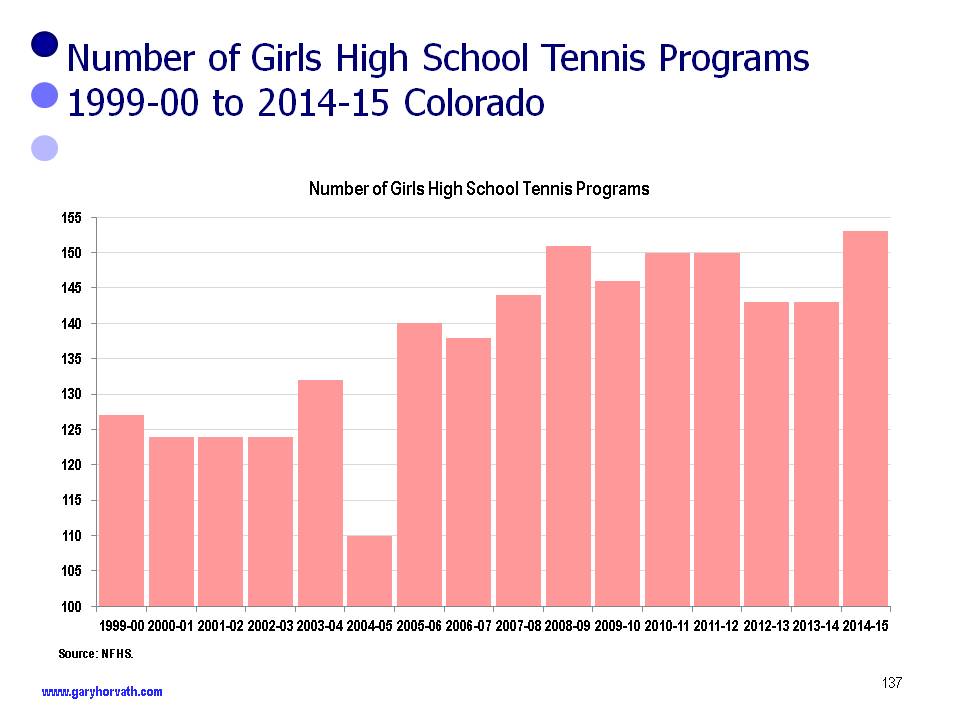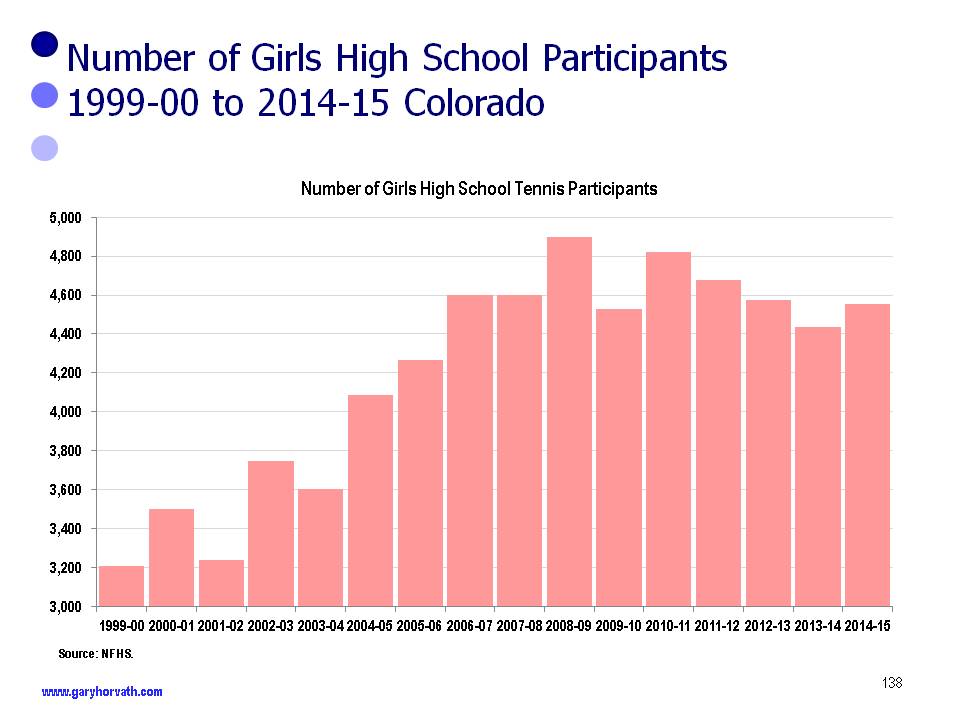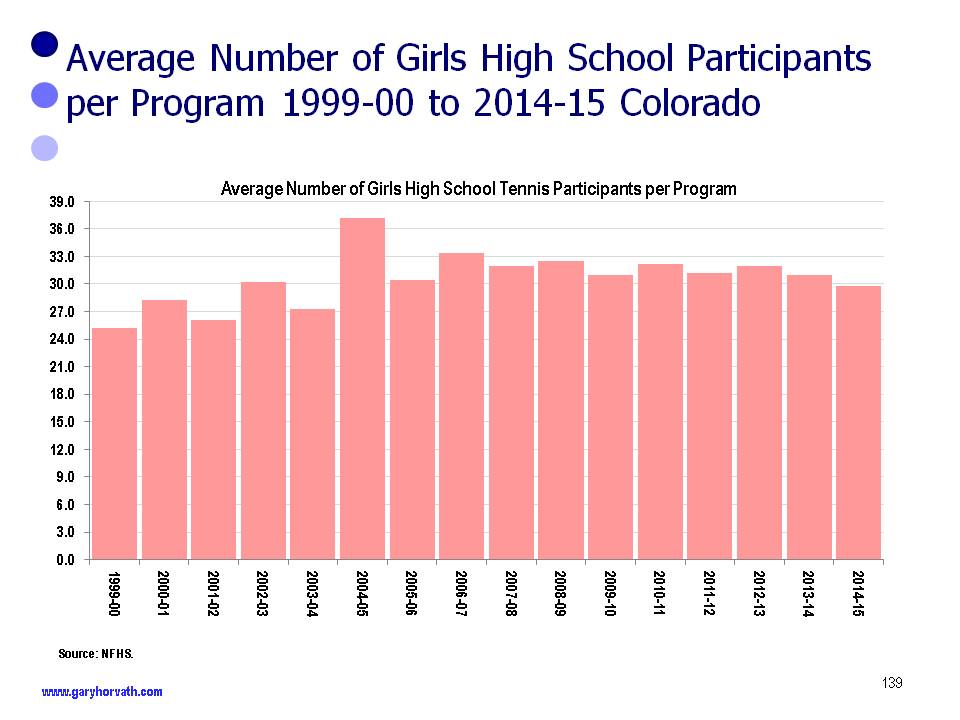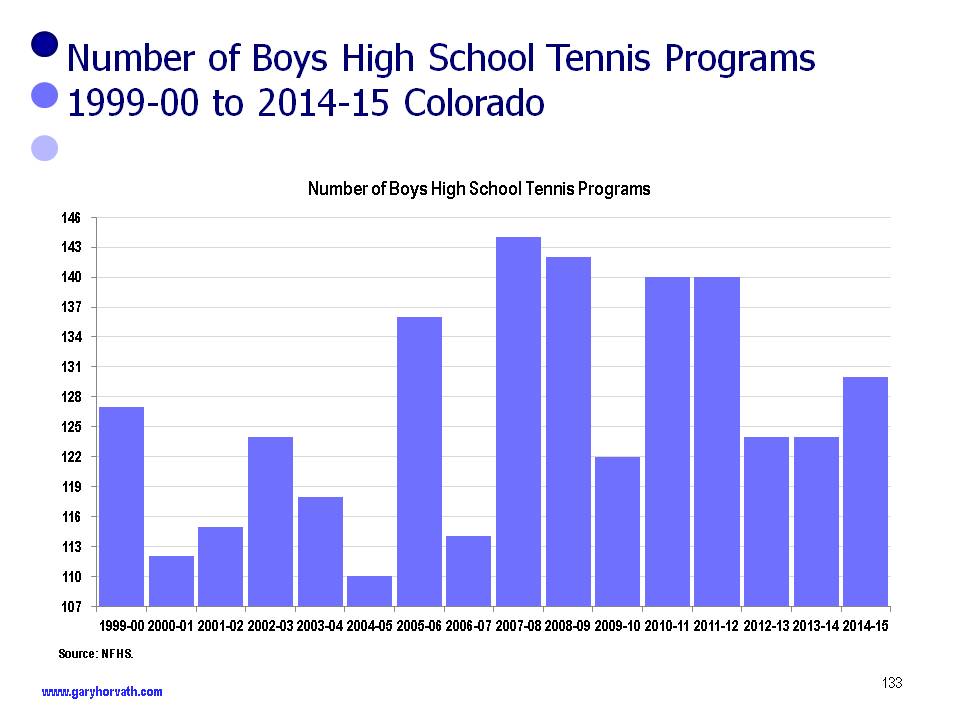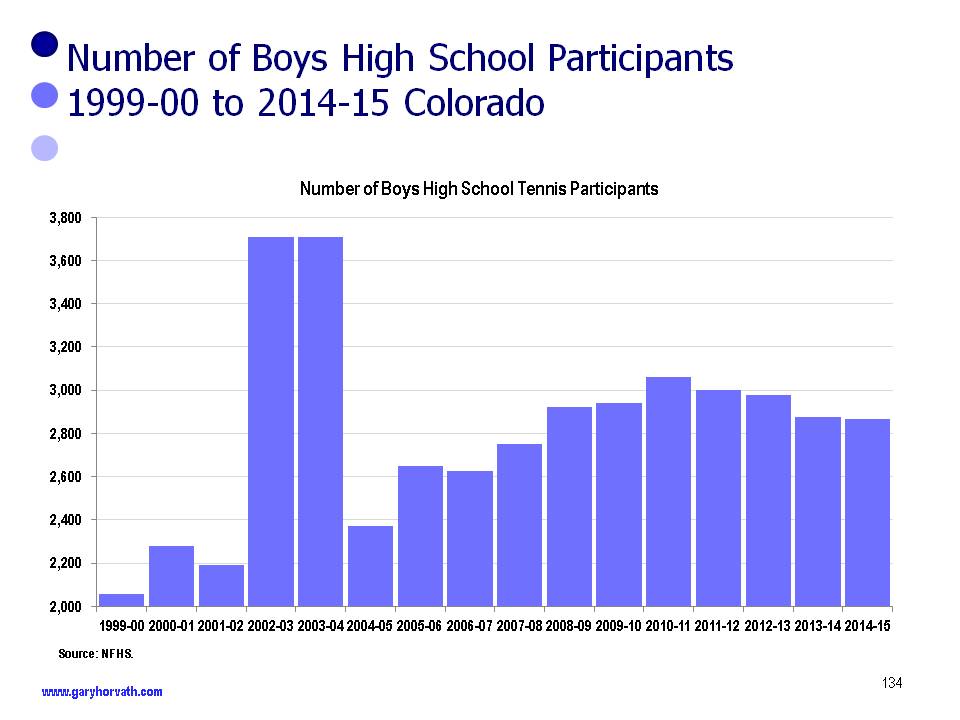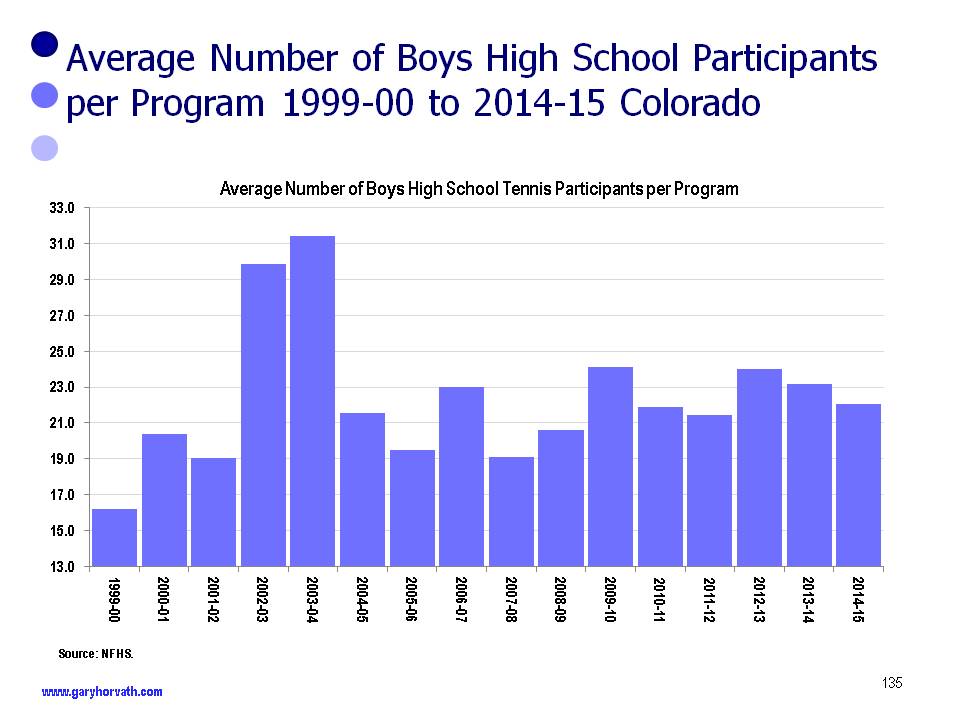If a group of parents, athletic directors, trade associations, manufacturers, retailers, coaches, tennis professionals, medical services, and athletes were convened to discuss the purpose of high school tennis they would provide a variety reasons why high school tennis is important. Some of the perspectives are listed below. High school tennis is:
• An individual sport. This is reflected by the fact that the state tournament is actually 7 different tournaments – 3 singles and 4 doubles. Athletes learn to manage mistakes and solve problems when they are the only person competing.
• A team sport. Players learn to enjoy the sport with a group of girls who share a love of the sport.
• An individual sport with team scoring. This allows the athletes to get best of both worlds. They can play an individual sport and still be supported by teammates.
• A large market for tennis goods and services.
• An athletic program that may focus on quantity rather than quality of the program. Smaller programs may have 30 players while some programs have as many as 150 players.
• A feeder system for college tennis. This may be the case for the stronger teams. Frequently, players who want to play college tennis are more likely to focus on USTA tournaments and rankings than high school tennis.
• A program intended for players who will not play sports after high school.
• A feeder program for local tennis clubs, recreation programs, and USTA programs.
• The recipient of players from other programs – local tennis clubs, recreation programs, and USTA programs. This perspective views high school tennis as the center of tennis for adolescents.
• A glorified intramural program. This may be the case for JV or lower programs or schools that make it a no-cut sport.
• A program that gives juniors an opportunity to play during the school year. This may be the case for players who play tennis in recreation programs and summer tennis clubs.
• Social tennis, where the primary purpose is for players to play with their friends.
• Entry level programs where players learn to play sport in a no-pressure, no-cut environment.
All of these perceptions about the purpose of high school tennis have merit; however, high school tennis cannot be all things to all people. The industry and the school programs would be better served if high school tennis leaders would identify its primary and secondary purposes, communicate those purposes to the industry, and become more formally integrated into the industry.
